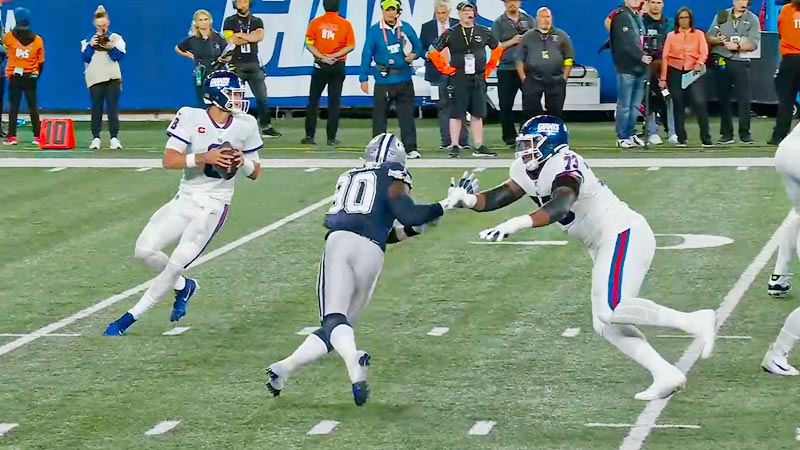In the heart of a football game, when the battle for yards and points is at its peak, there’s a moment that encapsulates the essence of strategy, determination, and nail-biting tension. It’s the “4th and inches” scenario, where a team’s fate hangs in the balance, just inches away from a crucial first down.
This pivotal juncture in a football game has captivated fans, coaches, and players alike, generating debates and discussions about the best tactics, decision-making, and the impact on the game’s outcome.
In this article, we delve into the world of “4th and inches” situations, addressing five frequently asked questions that shed light on the strategies, implications, and drama. So, stay focused.
What Is Football 4th And Inches?
In American football, “4th and inches” refers to a critical situation in which a team is facing its fourth down with only a very short distance—usually just inches—left to gain a new set of downs.
In this scenario, the offensive team is on the brink of either converting for a fresh set of downs or turning the ball over to the opposing team.
Opting to go for it on fourth and inches indicates the team’s intent to continue their offensive possession by gaining the necessary distance to secure a first down.
Teams often choose to run a short and powerful rushing play or have the quarterback attempt a quarterback sneak, where they try to quickly advance the ball past the first down marker using their own momentum.
The decision to go for it or punt depends on the game situation, field position, and the team’s confidence in their ability to gain those crucial inches.
Strategic Approach of Football 4th And Inches
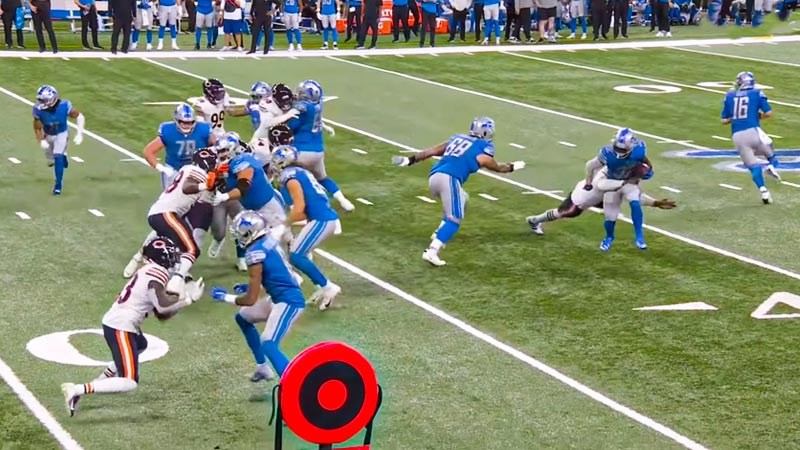
In the strategic approach to a “4th and inches” situation in football, teams have three main options: punting, kicking, or going for it. Each choice comes with its own advantages and risks.
Punting
Punting involves the special team’s unit kicking the ball deep into the opponent’s territory. This option is often chosen when the offensive team is close to their own end zone and believes that punting will help flip the field position.
By forcing the opposing team to start their possession farther from the end zone, the punting team aims to give their defense a better chance of stopping the opponent’s advance and potentially gaining a better field position for their next offensive drive.
Kicking
Teams might opt for a field goal attempt if they are within their kicker’s range. This decision is often influenced by the game’s score, time remaining, and the kicker’s reliability.
While a successful field goal results in three points, if the attempt is unsuccessful, the opposing team gains possession at the spot of the kick, potentially providing them with an advantageous field position.
Going for It
Opting to go for it on fourth and inches signals a strong belief in the team’s ability to gain those few inches and continue the offensive drive. Teams typically employ power running plays or quick quarterback sneaks to quickly advance the ball over the first down line.
Successfully converting not only extends the offensive possession but also demonstrates confidence and momentum. However, failing to convert gives the opposing team a shorter field to work with, increasing their chances of scoring.
The choice among these strategies depends on factors like the score, time remaining, field position, the team’s offensive and defensive strengths, and the overall game plan.
Defense in 4th And Inches in American Football
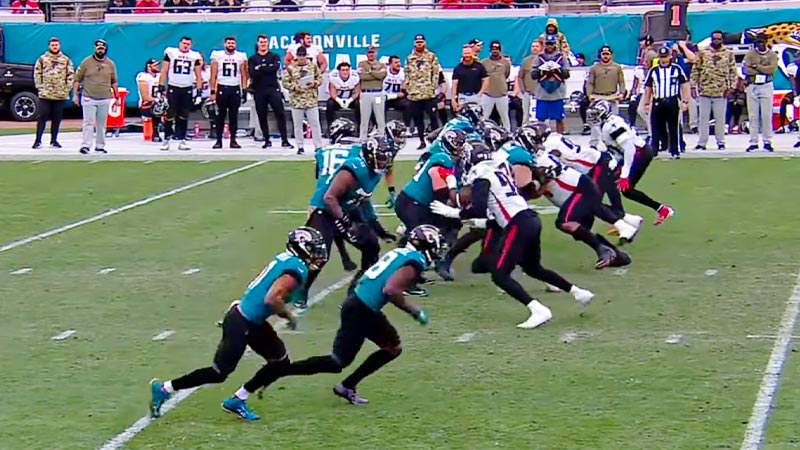
Defending a “4th and inches” situation in American football presents a critical challenge for the defensive team, as the offensive team is just inches away from gaining a fresh set of downs.
The defensive approach can vary based on field position, game context, and the opposing team’s tendencies. Here’s a strategic overview of defensive options:
Goal Line Stand
If the offense is close to the goal line, the defensive strategy might involve a “goal line stand.” This entails deploying a heavier defensive front to plug gaps and prevent the offense from pushing through for those crucial inches.
Defensive linemen and linebackers focus on maintaining a low stance to counter the offensive line’s push.
Stacking the Box
In situations where the offense is expected to run a short rushing play, the defensive team might “stack the box.”
This means bringing more defenders closer to the line of scrimmage to clog running lanes and stop the ball carrier’s advance. It’s a riskier strategy against play-action passes, as it could leave the secondary vulnerable.
Blitzing
Aggressive blitzing can disrupt the offensive line’s blocking schemes and put pressure on the ball carrier. The defense can bring extra defenders to penetrate the line and disrupt the play before it develops.
Line Stunts
Defensive linemen might use line stunts, where they switch positions at the snap to confuse the offensive line and create openings for a disruptive play.
Man-to-Man Coverage
If the opposing team is expected to pass, playing tight man-to-man coverage on receivers can reduce the likelihood of a successful throw, making it difficult for the quarterback to find an open target quickly.
Gap Integrity
Maintaining gap integrity is crucial. Each defensive player must be responsible for a specific gap to prevent the offense from exploiting openings and breaking through the line.
Anticipating the Snap
Defensive players might try to anticipate the snap count to gain an early advantage in penetrating the line and disrupting the play.
Force a Fumble
Defensive players can aim to strip the ball from the ball carrier to create a turnover, potentially giving their own offense a better field position.
The defensive approach depends on the team’s strengths, the offensive tendencies they’re facing, and the potential risks associated with each strategy.
Offensive Tactics and Plays in Football 4th And Inches
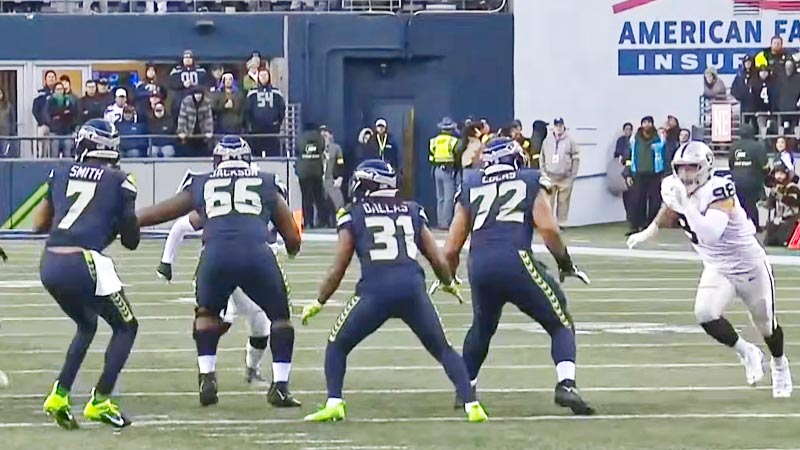
In a “4th and inches” situation in football, the offensive team is faced with a short distance to gain a new set of downs.
The offensive approach depends on field position, game context, and the team’s strengths. Here are some offensive tactics and plays commonly used in this scenario:
Quarterback Sneak
The quarterback quickly takes the snap and dives forward behind the center and the offensive line. This play capitalizes on the element of surprise and the quarterback’s ability to gain a few inches by using their own momentum.
Quick Dive or Blast
The running back takes a quick handoff and follows the offensive line into the line of scrimmage, aiming to power through for the necessary distance. This play relies on the offensive line’s ability to create a surge at the line of scrimmage.
Quarterback Dive
Similar to a quarterback sneak, but with a designed play where the quarterback follows a specific gap created by the offensive line. It can involve a lead blocker to clear a path for the quarterback.
QB Bootleg
The quarterback fakes a handoff or a run up the middle and then rolls out to one side, potentially having the option to run or pass to an open receiver. This play exploits the defense’s anticipation of a straightforward run.
Play Action
The offense uses play-action by pretending to run the ball and then having the quarterback attempt a pass. This can catch the defense off-guard and create opportunities for short passes to open receivers.
Hard Count
The offense might use a hard count, where the quarterback changes the snap count to draw the defense offside and gain a free first down.
Unbalanced Line
Shifting more offensive linemen to one side of the line of scrimmage can create an imbalance that the offense exploits to push through for the necessary inches.
Wedge Formation
The offensive line forms a tight wedge with the ball carrier behind them. This play aims to maximize the push-up front and gain the needed distance.
Sneak Play-Action Pass
The offense sets up as if they’re going to run a quarterback sneak, but the quarterback quickly steps back and attempts a short pass to a receiver, taking advantage of the defense’s focus on stopping the run.
Wildcat Formation
In this formation, a non-quarterback player takes the snap and runs the ball, usually behind a direct snap from the center. This adds an element of unpredictability and can confuse the defense.
Impact of Football 4th And Inches
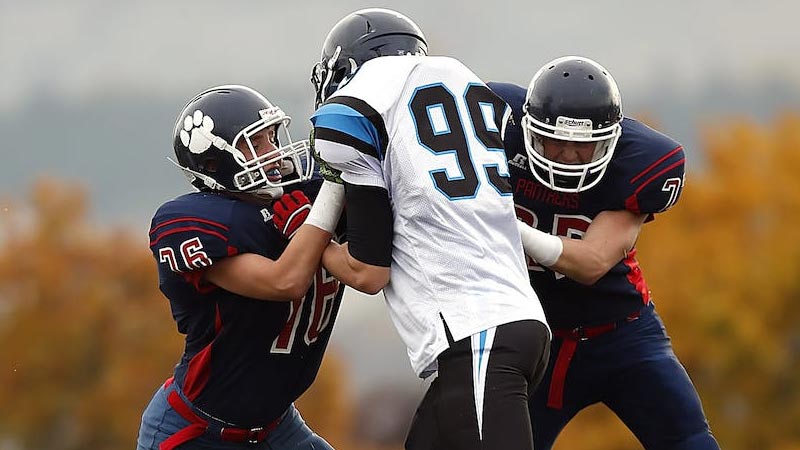
The outcome of a “4th and inches” situation in football can have a significant impact on the course of a game.
The decision made and the subsequent result can influence momentum, field position, and ultimately the final score. Here’s how the impact unfolds:
Momentum Shift
Successfully converting on 4th and inches can provide a boost of momentum to the offensive team. It shows confidence and determination, energizing both players and fans.
Conversely, a failed conversion attempt can swing momentum in favor of the defensive team, giving them a psychological edge.
Field Position
The result of the play affects the field position. A successful conversion grants the offense a new set of downs and an opportunity to advance further down the field. This can lead to increased scoring chances.
A failed conversion, on the other hand, gives the opposing team a shorter field to work with, improving their starting position.
Time Management
The decision to go for it, kick, or punt on 4th and inches affects the clock. If the offensive team converts, they retain possession and continue to eat up clock time. If they fail, the clock stops, giving the opposing team more time to work with.
Game Strategy
The outcome influences the overall game strategy. A successful conversion might encourage the offense to be more aggressive and take calculated risks, while a failed attempt can prompt a more cautious approach.
The defensive team’s strategy could also shift based on the field position and time remaining.
Psychological Impact
The impact goes beyond the immediate play. The decision-making process and the result can impact players’ confidence in their coaches and their own abilities. This can influence future decisions and plays throughout the game.
Scoring Opportunities
A successful conversion extends the offensive possession, increasing the likelihood of advancing into scoring range. A failed attempt, especially in the team’s own territory, might give the opposing team an easier chance to score.
Fan Engagement
The high-stakes nature of 4th and inches plays engages fans emotionally. The tension and excitement surrounding these pivotal moments can enhance the fan experience and make the game more captivating.
Coaching Evaluation
Coaches’ decisions on 4th and inches are often scrutinized by fans, analysts, and even the media. The outcome can impact how coaches are perceived and evaluated based on their strategic choices.
So, a “4th and inches” situation is a crucial juncture in a football game, and the decision made and its subsequent outcome have far-reaching effects on momentum, field position, strategy, and the overall flow of the game.
FAQs
What exactly is “4th and inches” in football?
“4th and inches” refers to a critical point in a football game when an offensive team faces a fourth down with only a minimal distance—typically just inches—left to gain a new set of downs.
The team’s decision whether to punt, attempt a field goal, or go for it on this short distance can significantly impact the game’s outcome.
Why would a team choose to go for it instead of punting or kicking a field goal?
Choosing to go for it on “4th and inches” often signifies the team’s confidence in their offensive line’s ability to gain those inches through a powerful run play or a quarterback sneak.
Going for it maintains possession, provides an opportunity to extend the drive, and can energize the team with momentum.
What are the defensive strategies to counter a “4th and inches” play?
Defending against a “4th and inches” play involves anticipating the offensive tactics. Strategies might include a goal line stand, stacking the defensive line to prevent the push, aggressive blitzing, man-to-man coverage, and maintaining gap integrity.
The defensive approach depends on the situation, the opponent’s tendencies, and the field position.
How does a successful or failed conversion on “4th and inches” impact the game?
The result of a “4th and inches” play can lead to a shift in momentum, influence field position, affect time management, alter game strategies, and impact psychological factors for both teams.
A successful conversion energizes the offense and fans, while a failure can give the defensive team an advantage and change the game’s dynamics.
Why is the “4th and inches” moment so crucial in football?
The “4th and inches” situation embodies the essence of strategic decision-making and high-stakes drama in football. The outcome can dictate the flow of the game, momentum swings, field position, and even impact coaching evaluations.
It’s a microcosm of the sport’s intensity and showcases the intricate balance between risk and reward.
Wrapping Up
As the clock ticks down and the roar of the crowd reverberates, “4th and inches” epitomizes the essence of football’s tension and excitement.
This singular moment of strategic choice and determined execution carries the potential to reshape the course of a game, leaving an indelible mark on both players and fans.
The drama and strategy that surrounds “4th and inches” serve as a testament to the intricate nature of the sport, where inches can separate victory from defeat, and where the thrill of competition takes center stage. Thank you for your time.

